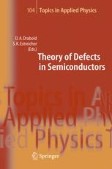Search
Search Results
-
Present Status of Antifouling Systems in Japan: Tributyltin Substitutes in Japan
An international conference held by the International Maritime Organization in October 2001 adopted an “International convention on the control of...
-
New Trends in Sample Preparation Methods for the Determination of Organotin Compounds in Marine Matrices
Tributyltin still remains a major issue for the marine environment and its determination is mandatory by legislation in several countries. As for...
-
Development, Occurrence and Regulationof Antifouling Paint Biocides: Historical Review and Future Trends
Antifouling agents have been used on ships since the ancient Roman and Greek civilizations. A brief history is provided through to the demise of...
-
Antifouling Paint Booster Biocides: Occurrence and Partitioning in Water and Sediments
Following the ban on the use of tributyltin (TBT) in antifouling, several organic booster biocides have been used in conjunction with copper in...
-
Worldwide Occurrence of Organotins from Antifouling Paints and Effects in the Aquatic Environment
Organotins belong to the most toxic pollutants for aquatic life known so far. Widespread contamination of harbors and areas with high ship**...
-
Quasiparticle Calculations for Point Defects at Semiconductor Surfaces
We present a quantitative parameter-free method for calculating defect states and charge-transition levels of point defects in semiconductors. It...
-
Chemistry and Fate of Organotin Antifouling Biocides in the Environment
Organotin antifouling paints are degraded relatively rapidly in seawater mainly by microorganisms, but they have high affinities to sediment and...
-
Toxicity and Preliminary Risk Assessment of Alternative Antifouling Biocides to Aquatic Organisms
Published literature has been reviewed regarding the toxicity of representative alternative antifouling biocides (Chlorothalonil, Dichlofluanid,...
-
Dissipative Solitons in Pattern-Forming Nonlinear Optical Systems: Cavity Solitons and Feedback Solitons
Many dissipative optical systems support patterns. Dissipative solitons are generally found where a pattern coexists with a stable unpatterned state....
-
Bifurcations and Strongly Amplitude-Modulated Pulses of the Complex Ginzburg-Landau Equation
In this chapter, we consider a theoretical framework for analyzing the strongly-amplitude modulated numerical pulse solutions recently observed in...
-
Terahertz Radiation from Semiconductor Surfaces
In this chapter, terahertz radiation from semiconductor surfaces by excitation of femtosecond laser pulses is discussed with special attention, paid...
-
The Unique Antarctic Atmosphere: Implications for Adaptive Optics
The turbulence structure of the atmosphere is the primary limitation to adaptive optics system performance on extremely large telescopes — driving...
-
High Order Adaptive Optics Simulation Tool for VLTs and ELTs
In order to evaluate the performances of Adaptive Optics (AO), pertinent evaluation of the error budget must be provided. This can be performed with...
-
Direct Detection of Exoplanets with Future Adaptive Optics Systems
Directly imaging extrasolar planets will greatly complement the indirect methods of planet search. The next-generation adaptive-optics instruments...
-
Preliminary Commissioning Results of Altair
Altair is the facility adaptive optics (AO) system of the Gemini North Telescope. It was designed and built at the National Research Council of...
-
Resolving the Arches Starburst Cluster in the Galactic Center with NAOS-CONICA
With a central density of 3⋅ 105 M⊙ pc–3 and estimated total mass of 104 M⊙, the Arches cluster is one of the most massive and compact young clusters...
-
Near-Infrared Imaging of Late Type Stars Using CIAO on the Subaru Telescope
We have manufactured a near infrared camera named coronagraphic imager with adaptive optics; CIAO mounted on the Cassegrain focus of the Subaru 8m...
-
NAOS/CONICA Imaging of the Nebula Surrounding IRAS 17340–3757
During a program to discover new YSO candidates [1], we have serendipitously discovered IRAS 17340–3757 to be a hitherto unknown carbon star with...
-
NGC1068: Registration with Narrow Field of View and Morphology
Several issues are inherent to adaptive optics (AO) observations, and particular to our concern is the small field of view. It is an important issue...
-
Infrared Excess Sources in the Galactic Center Stellar Cluster
We present results from diffraction-limited L′-band spectroscopy and H, K, and L′-band imaging of the IRS 13 region in the Galactic Center performed...
